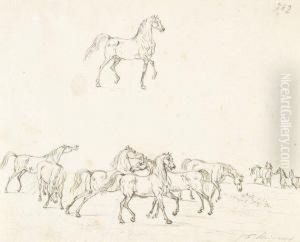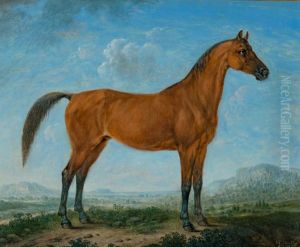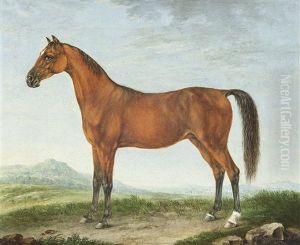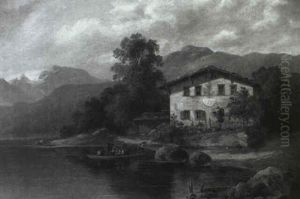Johann Friedrich Steinkopf Paintings
Johann Friedrich Steinkopf was a German painter and engraver, born in Stuttgart in 1778. He was known for his works in the Neoclassical style, which was predominant in the arts during the late 18th and early 19th centuries, reflecting a desire to return to the aesthetics and principles of Classical antiquity.
Steinkopf's education and artistic training began under the tutelage of his father, who was also an artist. He later continued his studies at the Hohe Karlsschule in Stuttgart, a military academy that also offered a strong arts program. During his time there, Steinkopf honed his skills in painting and engraving, disciplines that he would continue to develop throughout his career.
After his studies, Johann Friedrich Steinkopf became active as an artist, working on both portraits and historical scenes. His works were characterized by their attention to detail, clarity of form, and the use of light and shadow to convey depth and volume, hallmarks of the Neoclassical style. He was part of a broader movement in German art that sought to cultivate a sense of national identity and pride through the revival of classical themes and aesthetics.
Throughout his career, Steinkopf was also involved in the production of engravings, which helped disseminate his and others' artworks to a broader audience. This was an important aspect of art in the period, as engravings were one of the primary means through which images were reproduced and shared before the advent of modern printing techniques.
Steinkopf's contributions to the art world were recognized during his lifetime, and his works were collected by aficionados and patrons of the arts. He remained active as an artist until his death in 1837. While he may not be as well-known as some of his contemporaries, Steinkopf's work remains a testament to the Neoclassical movement in Germany and provides insight into the cultural and artistic aspirations of his time.



